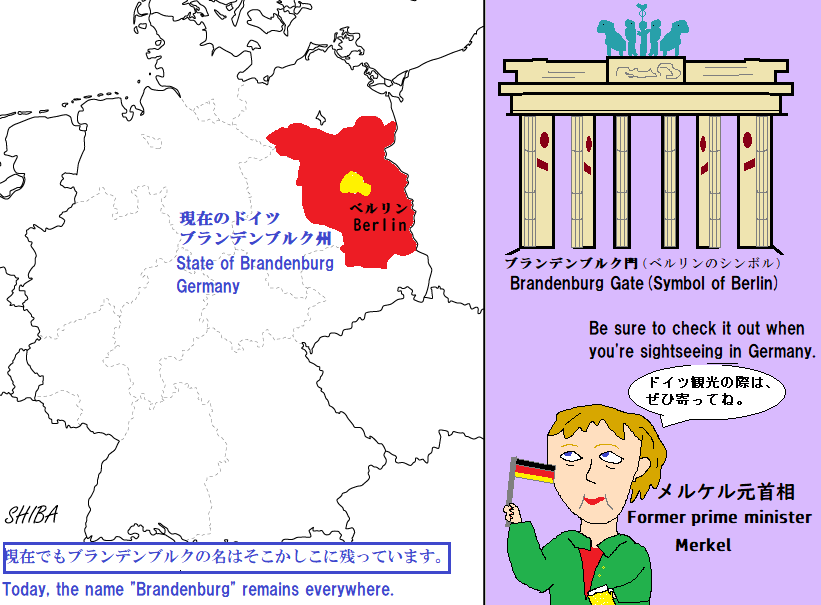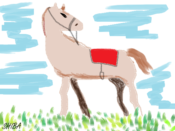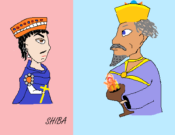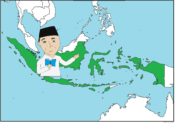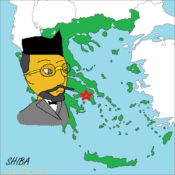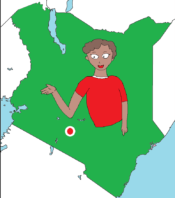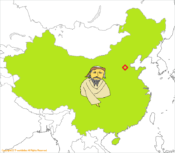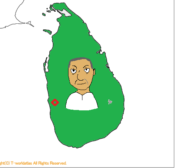ベルリンに壁が築かれた理由とは? Why was the wall built in Berlin?
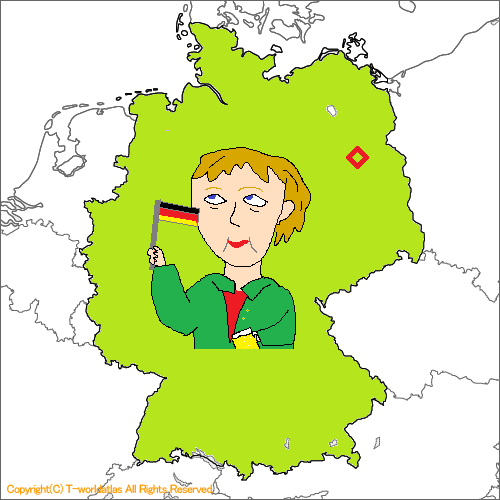
平成以降生まれの人にはピンとこないかもしれませんが(あ、私は昭和末期の生まれです)、一定の世代から上の人に、「ベルリン」といえば?と聞けば、半数以上が「ベルリンの壁」と答えるかもしれません。ベルリンの壁が壊されたのが1989年、日本でも昭和から平成へと時代が移った歴史の転換期でした。
It may not make sense to people born since the Heisei era(1989~), if you ask what do you image about “Berlin”? to people from a certain generation up, more than half of them will probably answer “Berlin Wall.” When the Berlin Wall was torn down was in 1989, was also a turning point in Japan’s history as the Showa era changed to the Heisei era.
今やEUの中核を担い、ヨーロッパの動きにも大きな影響を与えているドイツ。その首都ベルリンがなぜ壁に囲まれてしまったのでしょうか。非常に簡単に言えば、ベルリンが「ドイツ東部にあったから」です。
Germany now plays the core of the EU and has a great influence on European movements. Why was the capital of this nation surrounded by a wall? To put it very simply, it was because Berlin is “in eastern Germany.”
もくじ
バラバラの神聖ローマ帝国 The disjointed Holy Roman Empire
ドイツの歴史は複雑でなかなか難しいのですが、重要な点をかいつまんで書くと以下のようになります。まず、962年に神聖ローマ帝国という国が成立しました。なぜドイツなのに「ローマ」かというと、5世紀に滅亡した西ローマ帝国の、正式な跡継ぎという意味が込められていたからです。
Germany’s history is complex and difficult to understand, but the important points can be summarized as follows. In 962, a kingdom called the Holy Roman Empire was established. The reason why Germany is called “Rome” is because it had the meaning of being the official successor to the Western Roman Empire, which fell in the 5th century.
そのトップが「神聖ローマ皇帝」(以下皇帝)なのですが、仰々しい名前のわりに、その権限は決して大きくはありませんでした。ドイツにはシュバルツバルトなど深い森が広がり、当時は交通網が発達していなかったこともあって、皇帝が広いドイツの地を一人で統治することは困難でした。そのため帝国内の大半は、地元の貴族に統治を任せきりにしていました。
The top of this kingdom was the “Holy Roman Emperor”, but despite his exaggerated name, his authority was never great. Germany was covered in deep forests such as the “Schwarzwald (Black Forest)”, and the transportation network was not well developed at the time, making it difficult for the emperor to rule the vast German lands by himself. As a result, most of the empire was left to local aristocrats to govern.
また11世紀頃から皇帝はローマ教皇と、「カトリックのトップがどちらか」を巡って争うようになります。そのため、皇帝はしきりにイタリアへ目を向け、ドイツをそれほど重視しなくなっていきました。
From around the 11th century, the emperor began to fight with the Pope about “who was the top Catholic”. And the Emperor began to focus more and more on Italy and less on Germany.
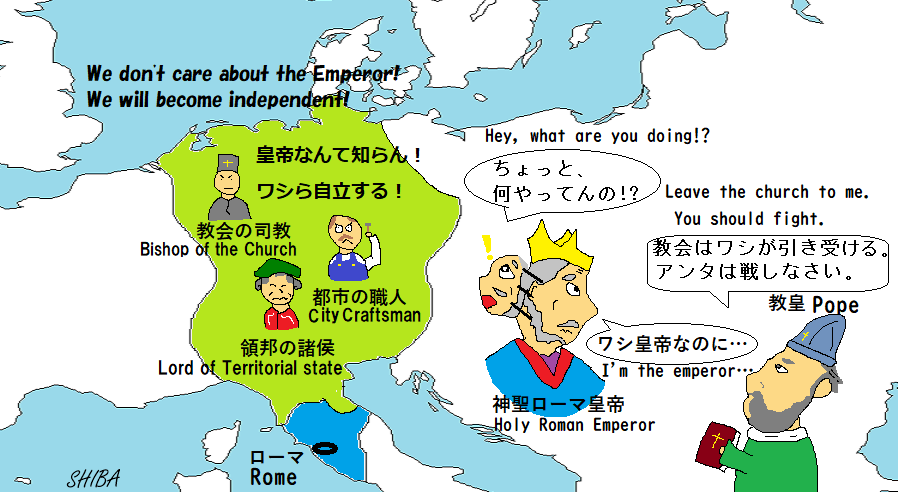
その結果、ドイツ(神聖ローマ帝国)内では、皇帝ではなく地方の貴族や司教が、各々の土地の統治者となり、独自の法律を作ったりしました。これを領邦といいます。簡単に言えば、神聖ローマ帝国という枠の中に、更に小さな独立国がひしめくような状態だったわけです。
As a result, in Germany (Holy Roman Empire), local nobles and bishops became rulers of each land and made their own laws rather than the emperor. This was called “Territorial state”. In other words, it was a situation in which smaller independent countries were crowded together within the Holy Roman Empire.
ブランデンブルクとプロイセン Brandenburg and Prussia
さて、肝心のベルリンですが、ここは「ブランデンブルグ辺境伯領」という領邦の中心都市でした。「辺境伯領」とあるように、この場所は神聖ローマ帝国でも「東の外れ」に位置した、言ってしまえば「イナカ!」でした。
Berlin was the central city of the “Margrave of Brandenburg”. As the name “margrave” suggests, this place was located on the “eastern edge” of the Holy Roman Empire; in other words, it was a “countryside”.
一方、ドイツ人は商業の盛んなバルト海へ進出し、現在のバルト三国やポーランド北部にも都市を築きました。その一つがバルト海沿岸のプロイセン地方です。この地は一時ポーランドの支配下に入った事もありましたが、17世紀に入って、とある君主がここを統治することになります。それこそがブランデンブルクの公で、以後ブランデンブルクはプロイセン公国、1701年からはプロイセン王国と名乗るようになります。
On the other hand, Germans expanded into the Baltic Sea, a thriving area of commerce, and built cities in the present-day Baltic States and northern Poland. One of them is the Prussian region on the Baltic Sea coast. This area was once under Polish control, but in the 17th century, a certain monarch came to rule it. This was the Duke of Brandenburg. And from then on Brandenburg came to be called the “Duchy of Prussia”, and from 1701 the “Kingdom of Prussia”.
プロイセン王国は、18世紀のフリードリヒ・ヴィルヘルム1世、続くフリードリヒ2世の時代に軍事力を強化し、フランスやロシアなどの大国にも一目置かれる国にまで成長しました。
The Kingdom of Prussia strengthened its military power during the 18th century under Frederick William I and Frederick II, and grew to become a country that was respected by major powers such as France and Russia.
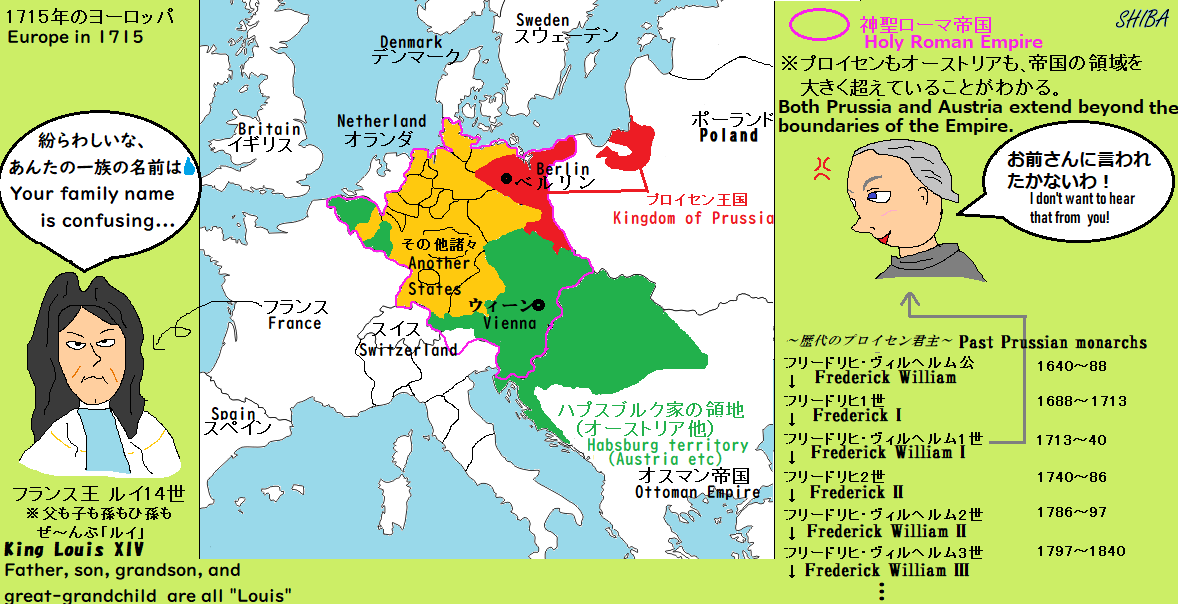
統一されたドイツ United Germany
19世紀、フランスではナポレオンが登場し、ドイツにも侵攻して神聖ローマ帝国は名実ともに消滅します。ドイツ人は、民族としては数が多いのに、小さな国に分裂している状態ではフランスなどと戦っても勝てない。そう思った人々は、ドイツの統合を進めていきます。そのリーダー格となったのが、先のプロイセン王国でした。
In the 19th century, Napoleon appeared in France and invaded Germany, and the Holy Roman Empire disappeared in both name and reality. Although the Germans were large in number as an ethnic group, if they were divided into small countries (Territorial states), they would not be able to win even if they fight against France. Those who thought so would proceed with the unification of Germany. The Kingdom of Prussia was the leader.
プロイセンは鉄血宰相と呼ばれたビスマルクの強力な政策によって各地の領邦を併合していきます。1866年、同じくドイツ系の大国だったオーストリアを排除し、主導権を握ったプロイセンは、1871年ついに統一を完成。名前を「ドイツ帝国」に改めました。また、プロイセンの首都ベルリンは、そのままドイツ帝国の首都に昇格しました。
Prussia annexed Territorial states under the powerful policies of Bismarck, known as the Iron Chancellor. In 1866, Prussia expelled Austria, which was also a large German power, and took the initiative, finally completing unification in 1871. The name was changed to “German Empire”. In addition, Berlin, the capital of Prussia, became the capital of the German Empire.
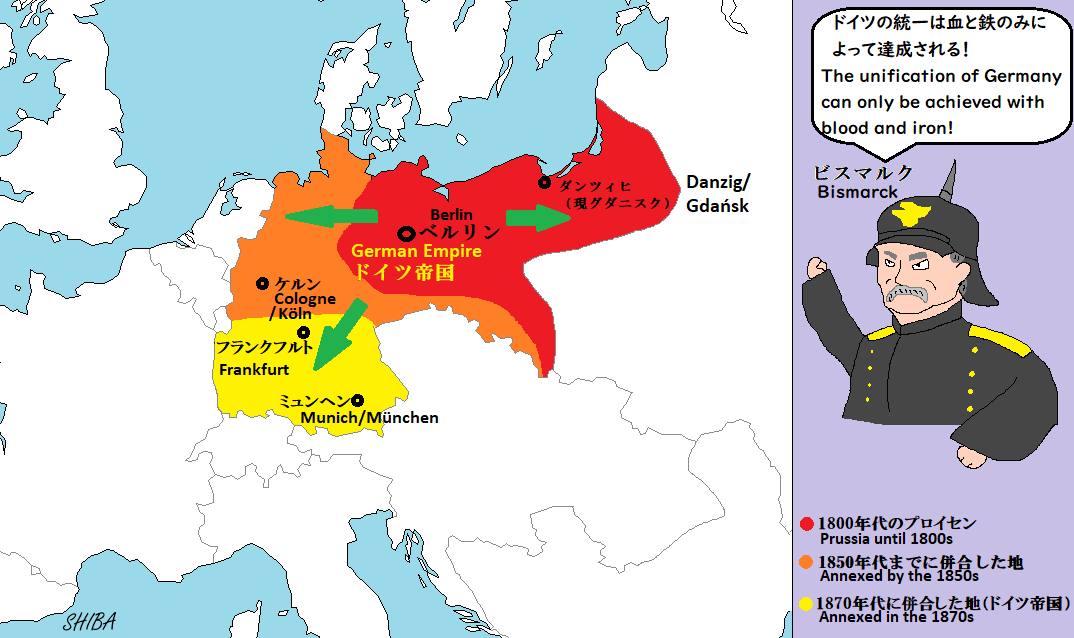
ただでさえ軍事大国だったプロイセンが、周りを併合して更に強力なドイツ帝国として生まれ変わった・・・これに恐怖したのがフランスやイギリスなど、ヨーロッパの先進国でした。
Prussia, which was already a military power, annexed its surroundings and was reborn as the even more powerful German Empire. This frightened the advanced European nations such as France and Britain.
産業革命で世界を牛耳る両国に対し、ドイツは追い付け追い越せと言わんばかりの発展を実現。英仏はドイツを抑え込もうとし、この結果第一次世界大戦を招いてしまいます。膨大な犠牲者を出した末、敗れたのはドイツでした。終戦直前に帝国から共和国へと変わったドイツは、領土を縮小したうえに、天文学的な賠償金を払わされました。当然ドイツ人は憤慨します。
While both nations dominated the world through the industrial revolution, Germany has achieved development that demands it catch up and surpass them. Britain and France tried to suppress Germany, resulting in World War I. After suffering huge casualties, Germany was defeated. Just before the end of the war, Germany changed from an empire to a republic, and not only was its territory reduced, but it was also forced to pay astronomical reparations. Naturally, Germans were outraged.
それでも何とか国際社会への復帰と、戦争でボロボロになった国土の再建を進めていきますが、そんな矢先の1929年世界恐慌が起き、再び社会は大打撃!辛い時代を一刻も終わらせたいとドイツ人が頼ったのが、「強い信念」と「行動力」を持ったヒトラーでした。
Despite this, they somehow managed to return to the international community and rebuild Germany that had been devastated by the war. But just then the Great Depression of 1929 occurred, and society was hit hard again. The German people turned to Hitler, who had “strong convictions” and “power of action,” to end their difficult times as soon as possible.
第二次世界大戦の悲劇と占領 Tragedy of World War II and Occupation
ヒトラーは、その悪魔的なリーダーシップで恐慌から脱却し、第一次世界大戦へのリベンジを掲げました。しかしこの結果1939年に第二次世界大戦が起こり、戦闘やホロコーストで「第一次」を上回る犠牲者を出してしまいます。
Hitler pulled out of the Depression with his devilish leadership and set out to take revenge on World War I. However, as a result of this, World War II broke out in 1939, resulting in more casualties than in the ” W W I ” due to battles and the Holocaust.
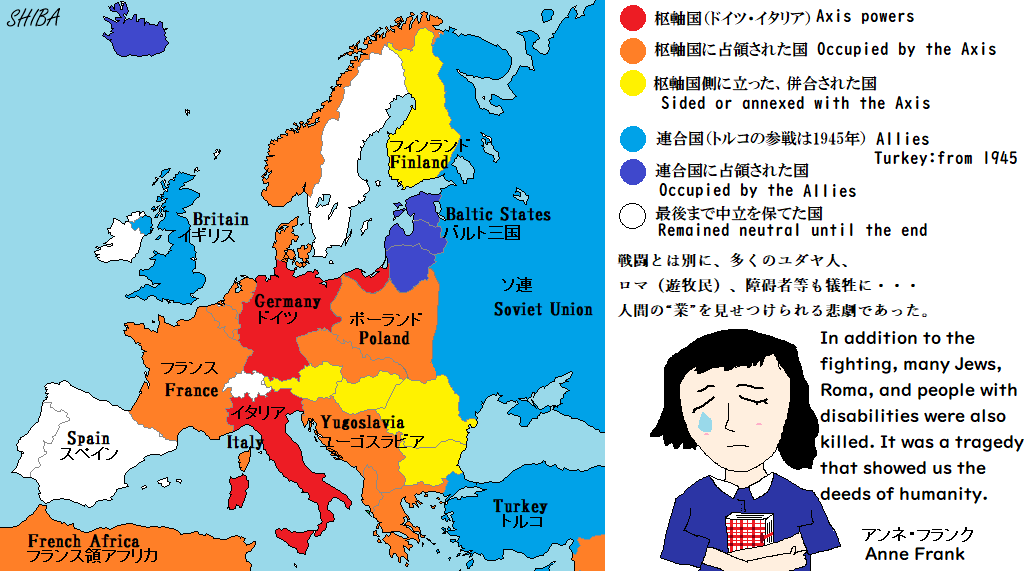
第二次世界大戦でドイツはまたも敗北。「戦勝国」となったのがアメリカ、イギリス、ソ連、フランスで、この4か国によってドイツは「分割占領」されました。そして重要な点ですが、この時ベルリンも4つに分割されました。
Germany was defeated again in World War II. The United States, Britain, Soviet Union and France became the “victory nations,” and Germany was occupied and divided by these four. Berlin was also divided into four parts at this time.
ヒトラーのような危険人物を首相に就かせてはならないということで、戦勝国に近しい人物による新ドイツ政府が作られるのですが、この時「じゃあ、どのような政府が理想か?」をめぐって資本主義国の米英仏と、社会主義国のソ連で、意見が食い違うようになります。
In order to prevent a dangerous person like Hitler from becoming leader, a new German government was created by people close to the victorious nation, but at this time, there was a difficult question, “What kind of government would be ideal?” Opinions began to diverge between the capitalist nations, United States, Britain, France, and the socialist nation, Soviet Union.
この結果、資本主義国家の「西ドイツ」政府と社会主義国家の「東ドイツ」政府が誕生してしまいます。
As a result, the capitalist state of “West Germany” and the socialist state of “East Germany” were born.
壁の建設 Construction of wall
米英仏3か国の占領地を元にした領域が西ドイツになったのに対し、ソ連の占領地は、そのまま東ドイツになります。ここで問題なのが首都ベルリンの扱い。この街を含むブランデンブルク地方は東ドイツとなったのですが、先の通りベルリンはベルリンで4か国の分割統治を受けたため、東西ドイツ成立後も、旧米英仏の占領地だった場所(通称西ベルリン)は西ドイツとなりました。つまり、西ベルリンは西ドイツの飛び地となったのです(地図の青~緑色の箇所)。
While the territory based on the occupied territories of the United States, Britain, and France became West Germany, the territory occupied by the Soviet Union became East Germany. And there was a problem about the capital, Berlin. The Brandenburg region, which includes this city, became East Germany, but Berlin was divided and ruled by four nations, so even after the establishment of East and West Germany, the area that was occupied by the United States, Britain, and France (West Berlin) also became West Germany. In other words, West Berlin became an enclave of West Germany (blue and green areas on the map).

やがて東ドイツでは、検閲や監視など、人々の自由が抑圧され始め、人々は機を見て西ドイツへ逃亡しました。特に西ベルリンは最も身近な西ドイツだったため、この街への亡命者は増加の一途をたどります。
Eventually, people’s freedoms in East Germany began to be suppressed through censorship and surveillance, and people began to flee to West Germany. Especially since West Berlin was the closest West Germany, the number of defectors to this city continued to increase.
そこで東ドイツ政府は、1961年、東西ベルリンとの間に有刺鉄線を張り、人々の移動をできなくします。この「壁」はやがてレンガにより「本物の壁」となり、監視塔なども設置されて亡命者の逮捕や殺害を断行したのです。
In 1961, the East German government erected barbed wire between East and West Berlin, making it impossible for people to move. This “wall” eventually became a “real wall” with bricks, and watchtowers were installed to arrest and kill defectors.
ベルリンの壁は東側では「防御の壁」としていましたが、西側では、自由を奪う「恥辱の壁」として非難の的に。更にこの壁は、アメリカ対ソ連という当時の対立構造「冷戦」のシンボルとなりました。
The Berlin Wall was seen as a “defensive wall” in the East, but in the West it was criticized as a ” Schandmauer /wall of shame” that robbed people of their freedom. This wall became a symbol of the Cold War, a conflict between the United States and the Soviet Union.
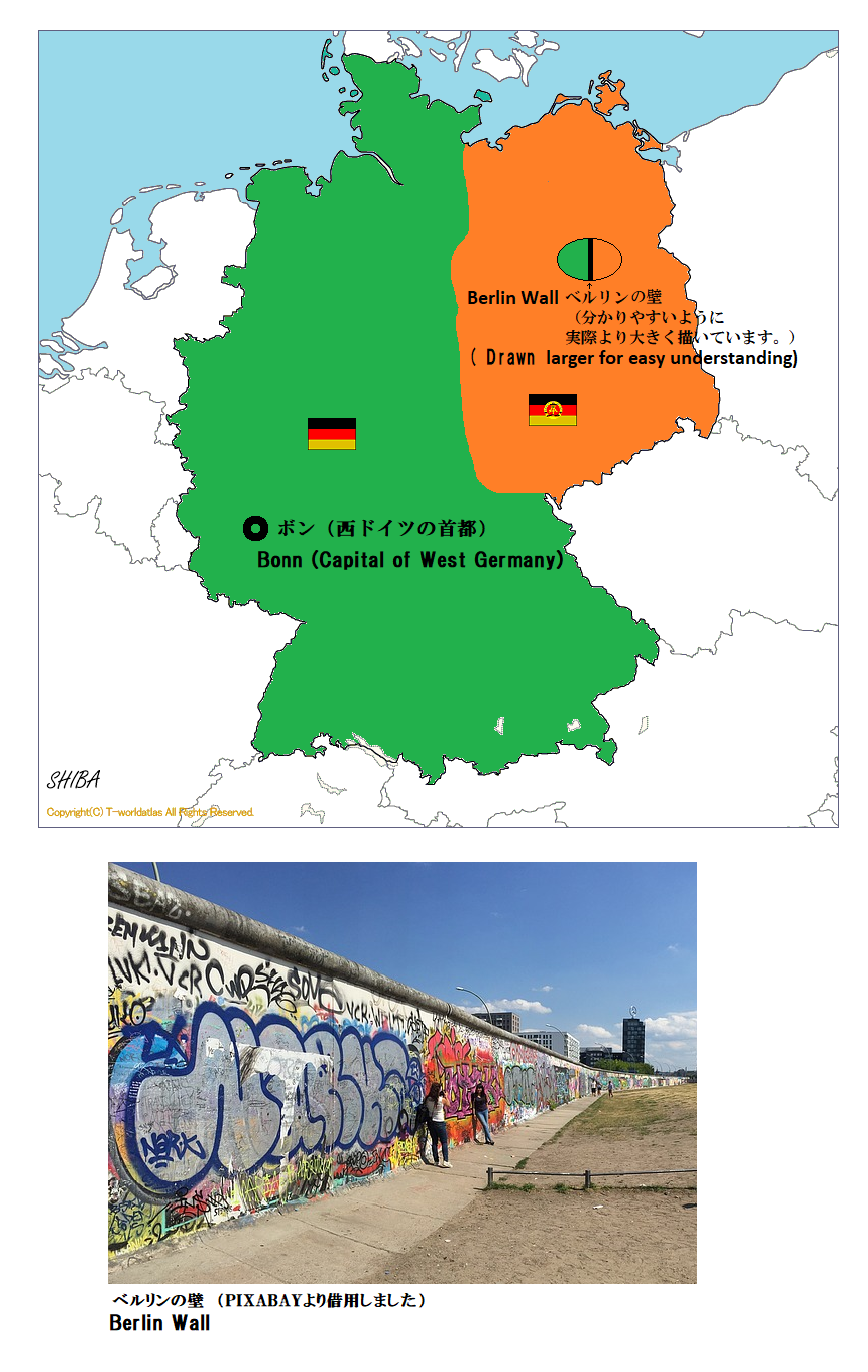
ドイツ再統一! German reunification!
1980年代になってソ連や東ドイツの社会は限界を迎えます。1989年、オーストリア(西側)とハンガリー(東側)の国境が開放されると、こちら経由で亡命者が西側へ逃れるようになりました。
In the 1980s, the societies of the Soviet Union and East Germany reached their limits. In 1989, when the border between Austria (west) and Hungary (east) was opened, defectors began to flee to the west via this border.
もはや東西ベルリンを壁で通れなくしても全くの無意味になったことが明らかになり、ついに壁はベルリン市民によって破壊されました。この間政府の交渉も進み、1990年ドイツは統合されました。
It became clear that there was no point in having a wall between East and West Berlin, and the wall was finally torn down by Berliners. During this time, government negotiations progressed, and Germany was unified in 1990.
人々の強い意志の前には、壁を築いても無力だということを教えてくれる出来事です。それはまた、近年隣国との間に壁を建設した某国の元大統領や首相達にも、ぜひとも知って欲しい、歴史の教訓と言えるでしょう。
This is an event that teaches us that building walls is powerless in the face of people’s strong will. It can also be said to be a history lesson that former presidents and prime ministers of “certain nations” who have recently built walls between themselves and neighboring countries should be aware of.
